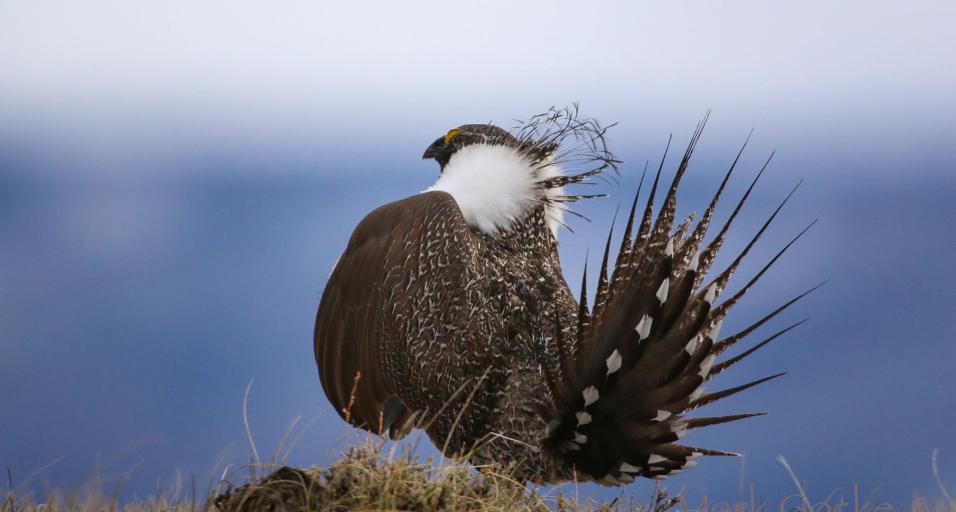Hopefully, you were able to take in the fantastic spring mating ritual for sage grouse this year. If not, plan for next year. It’s one of the great wildlife spectacles everyone should experience at least once in their lifetime.
Each year, several regional Game & Fish personnel in the Pinedale Region pitch in to help count the birds on their strutting grounds, called leks. Recently, Dean Clause Pinedale Wildlife Biologist for the Wyoming Game and Fish Department was able to tabulate this year’s numbers and says it looks like it’s going to be a third straight year of decreasing sage grouse numbers in the Pinedale Region. In fact, it’s nearly the lowest count over the past 20 years, second only to 2003.
Sage grouse populations are generally cyclic, as shown in the graph above. As previously mentioned, the current low count for strutting males in the Pinedale Region occured in 2003, yet peak numbers were counted just four years later in 2007. Like many wildlife populations, weather often is a major factor influencing such population swings. While drought conditions often result in population dips in many parts of the state, the Pinedale Region being higher elevation often doesn’t see those same late season impacts. However, a cool, wet spring during nesting and early brood-rearing can have devastating effects on sage grouse numbers in the Pinedale area.
One other population monitoring effort the Game & Fish does is to ask sage grouse hunters to deposit a wing from each of their harvested birds into barrels put out at key locations as they leave the field. After the season, biologists evaluate all the wings provided by hunters and can determine the number of young compared to adult females. Last fall, the wing data showed relatively few chicks per hen, so managers already had an indication that there may be a lower number of adults on the leks again this spring.
Fortunately, upland bird populations do tend to bounce back fairly quickly under favorable weather and habitat conditions. Wildlife managers are hoping for warmer, drier conditions for the nesting and brood-rearing in the coming weeks.
Sage Grouse Slump Continues for Pinedale Region
Mark Gocke, Public Information Specialist, 307-249-5811



